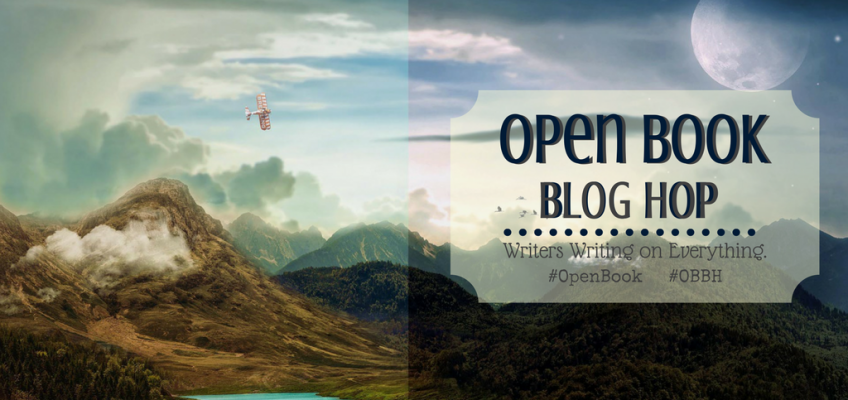Welcome back to another blog hop, with #OpenBook. Here’s this week’s prompt.
Don’t forget to click the purple button to see what everyone else has to say on this week’s subject. It’s at the end of my post.
Share your tips for world-building, even if it’s only a village
I can do better than that, I wrote a book about it.
I’m a member of a local writer’s group and before Covid, we used to do a lot of events. I would frequently give talks about the way I approached Sci-fi and alternative World-building.
it was suggested by several people that I compile my ideas into a course. The idea, that I could write a textbook, seemed a little out of my comfort zone. But, when I looked at reviews for my novels, a lot of them suggested that I knew what I was doing with world-building, so I decided to give it a shot.
In between other projects, I wrote a lot of extra content and put it, with my original lectures (if that’s not too grand a word) into a book, together with even more examples and exercises.
Here it is,

Do you want to write Sci-fi or Steampunk adventures?
Are you struggling with World Building?
Do you want to create a world: or even a universe, but you’re put off by all the science you think you need to know before you can start?
If the answer to any of those questions is yes, I’ve tried to simplify the process by showing you another way.
This guide is based on the World-building workshops that I hold as a member of the Exeter Authors Association. The aim is to show you an easier way of doing things, with chapters on such subjects as Location, Characters, Sidekicks and Steampunk. I’ll tell you the method that I’ve used to create several universes in the future and in an alternative present, maintaining realism without getting bogged down in the technicalities.
Creating a Sci-fi World contains exercises and suggestions, as well as examples from my novels, there are even some short stories to illustrate how my methods can be applied.
Here’s the contents page, showing the subjects covered.

and one of the first reviews,

Not to give too much away, (I’d prefer that you bought the book), here are a couple of tips,
Everything you create should start from a piece of knowledge that people will be familiar with. That doesn’t necessarily mean that it has to obey the laws of physics, just that it has a basis in something that the reader will recognise. That way, it will add authenticity and help the reader believe in your creation.
It’s often better to design your world as you go along and develop it in parallel with the story. Don’t waste time inventing places or things until you need them. It’s easier than having to modify what you came up with to fit into your world or your plot when you’re halfway through. At that point, the butterfly effect will take over and you’ll find yourself changing a lot more than you expected.
Finally, here’s a link to a post featuring one of the book’s chapters, where I discuss sidekicks.
Until next time.

Let me know what you think about this week’s subject.
I’d love to get your comments, please leave them below. While you’re here, why not take a look around? There are some freebies and lots more content, about me, my writing and everything else that I do. You can join my newsletter for a free novella and more news by clicking this link.
Now see what the other blogs in this hop have to say by clicking below.
Check out the other great blogs here.

![]()



Stevie Turner
We all seem to have approached this subject in a different way today.
Richard Dee
I wrote mine a couple of weeks ago. Today, I would have said something different.
Steven Smith
I’d agree with you on the bit about growing your world with the story. I think it would be too easy to build an enormous, sprawling world, only for one narrative element to screw the whole thing up. Better to build what you need. Almost in the same way video games used to only load what was actually needed to speed things up.
Richard Dee
I’d love to say that was where I got the idea from…, actually, it was from having to rewrite half a story.
Samantha J Bryant
It’s definitely important to incorporate world building alongside other story elements. Good post.
Richard Dee
I learned through bitter experience that I couldn’t invent a world and simply place a story in it.
P.J. MacLayne
I’ve never thought about the butterfly effect messing with my writing, but it makes sense – and looking back, I can see where it did,
Richard Dee
I learned that one the hard way.
Daryl Devore
Awesome.
Thank you for this – Don’t waste time inventing places or things until you need them.
When I was writing my medieval fantasy people kept asking questions I couldn’t answer because I hadn’t “gotten there” yet.
Richard Dee
I could add, don’t get distracted from the story by overcomplicating the world.
Jack Eason
Having read this article with great interest Richard, Thinking back to literally every one of my published books, I have only once created a world. That was/is Goblindom, my fantasy world where my Goblin Tales take place. All the rest occur here on Earth, or in the emptiness of space…
Richard Dee
I disagree. As well as Goblindom, you’ve created some very believable Sci-fi worlds.